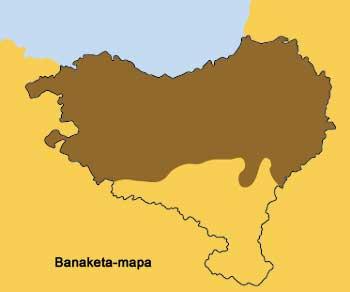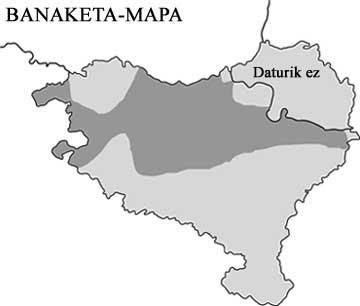Black Pit, Desolate
1991/11/01 Aihartza, Joxerra Iturria: Elhuyar aldizkaria
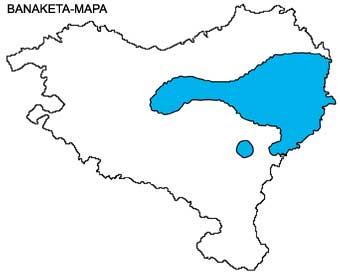
A few years ago, when we were on the hill of Haztaparreta, south of the Dehesa of Navarra, we made a surprising discovery: when we surrounded an old beech, we realized that this was completely “empty” up to a height of 3 m. Furthermore, while the wood was fresh, and although it seemed weak, it could not be said that it was corrupt.
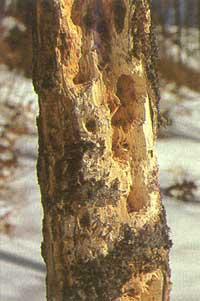
What could that reduction have done? In the back of the trunk you could see a large pile of chips about 5 cm in length and a few cm in width. On the other hand, in the wood of the tree, signs of sharp handful appeared to us. The answer was as unsatisfactory as bapatía: that great work was done by a bird, the black peak.
The black bird (Dryocopus martius), along with the rest of the birds, is a bright bird classified in the family of the legendary, and like the other members of this group, is an animal adapted for its arboreal life.
The birds are insectivorous and feed on invertebrates that inhabit the trunks of the trees, both in the skin and inside the wood. For this purpose they have a long and solid peak that allows them to drill and break the wood. On the other hand, the tongue of these birds is protractile and very long, and at its end it appears with silk to better maintain its hunting pieces, while the adhesive saliva also helps this work.
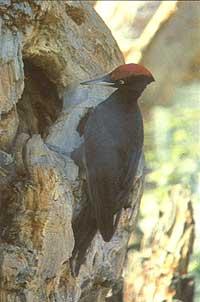
Their short legs are armed with long, strong fingers. And it is that most of the time is invested in the trunks of the trees in search of hunting. This tendency enlosadora makes the axes of the tail feathers of the birds are as strong as the wire. The bird rests on them to keep upright the vertical trunk with claws.
The black bird is the largest of the birds in Europe, with a length of 45-48 cm and a slope of 70-75 cm, since it is almost black. Its colors and general appearance are also very striking: it has a black plumage on the head, with a wide red stripe. This red line is very remarkable in the male. In the female, on the contrary, it is a small scar located in the neck of the bird. The beak is light grey and the white-yellowish eyes. As for its general aspect, it can be said that it is quite clumsy.
That is, the beak and the head of the black bird are very large compared to their fine neck, and the legs and tails also seem short, since generally the body of the bird offers a special design profile. If we add to this an acute whitish eye and the singing that the animal launches to claim its territoriality seems like a laugh without the pit of a maniac, it is easy to understand that the black bird is considered a crazy bird.
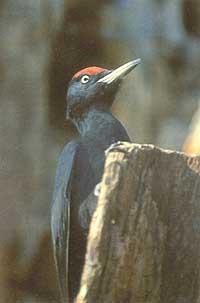
The black bird lives in the old forests boreales and temperate of Europe and Asia, developing a sedentary life save in the case of young specimens. In the Iberian Peninsula it has only been observed in the Pyrenees, in the Cantabrian Mountains and in the Central System, existing in this last zone only a relic population. In Euskal Herria lives mainly in the Pyrenees and its surroundings in hayeds, fir trees and mountain pine forests, between 800 and 1,600 m of altitude, and little by little has also been accepting ancient plantations of wild pine ( Pinus sylvestris ).
In these forests, and from February, you can hear anywhere the sound of the trap of the black male beak. This ramp is usually a kind of double of dry and fast foyer, and the bird forms it touching with its robust peak a branch to which it warns the females and other males.
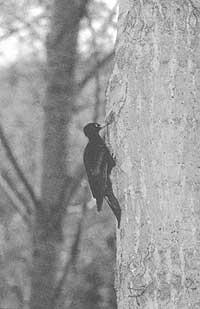
As has already been mentioned, the birds are mainly insectivores, and although occasionally they feed on seeds of pine or beech, these are only the smallest ingredients of their diet. On the contrary, the cortical insects, which inhabit the trunks of the trees, and the xylophagous coleoptera, which feed on the wood, are the favorite pieces of hunting of the black pit, for whose capture repeatedly pierces the trunks of the trees, being the most outstanding data that most of the holes excavated are pine trees. At the same time, when you find a tingling pot, do not hesitate to go down to the ground and work on it until you satiate with your long tongue.
Sometimes, the sick and/or rotting trees are usually sewn from all types of coleoptera or their larvae, so the black bird completely tritures the tree until there is only a lot of chips left. Thus, it is evident the importance of the black pit —and the rest of the birds— in the control of the populations of these insects, as well as in the process of decomposition of the dead wood, which facilitates and accelerates the work of invertebrates, fungi, bacteria and other decomposers by reducing the stems.
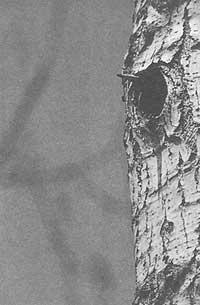
When spring arrives, black birds, after forming the couple, choose a robust and large tree, and drill the wood with the beak to build a magnificent chamber of about 20 cm of diameter inside the trunk. The elliptical porch of this chamber is usually located in the south direction.
At the end of April or May the female lays between 4 and 5 white eggs, and the txitos are born to the world between 12 and 14 days, with their male feeding and their female. At 20 days the txitos will begin to look out of the nest portal and by day 27 they will begin to explore the surroundings. Even so, the feeding of the txitos will be in the hands of the parents and the family group will not separate until two months.
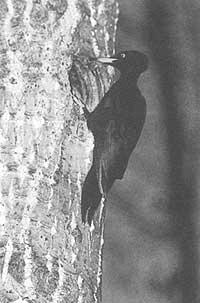
According to the above, and as in the case of most of the forest insects, it is evident that the duration of the black peak is intimately linked to the most extensive and mature forest, since the old and large tree is obligatory for the nidification and, in turn, in this type of jungles are found abundant insects that are part of their feeding. Thus, the importance of maintaining old forest areas and not removing from them sick or rotting wood is evident, both in terms of the black bird and most of the forest insects.
TECHNICAL SHEET: BLACK PEAK |
SPECIES : Dryocupus martius FAMILY FAMILY : PICIDAE ORDER : PIZIFORMES CLASS : BIRDS |

Gai honi buruzko eduki gehiago
Elhuyarrek garatutako teknologia




